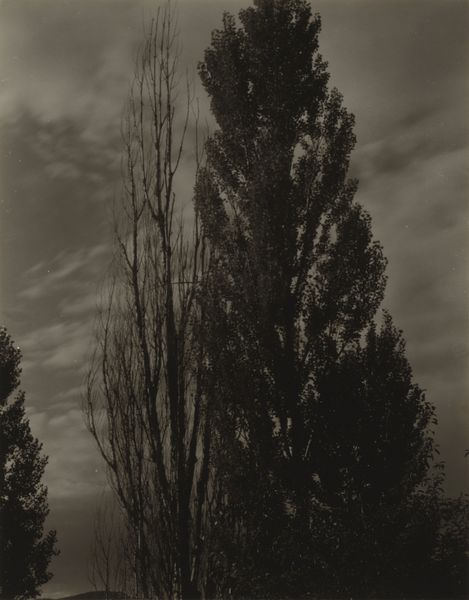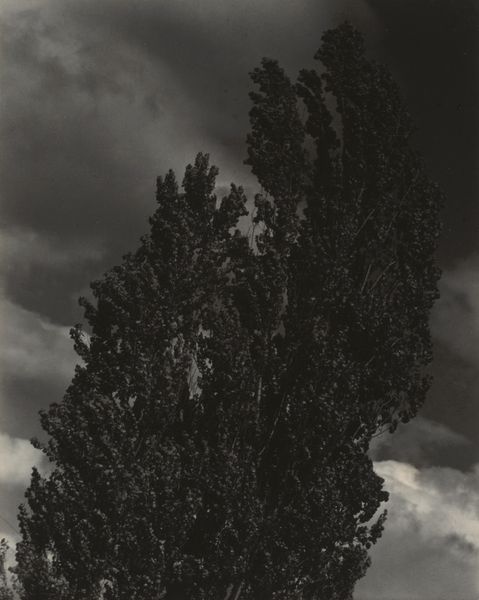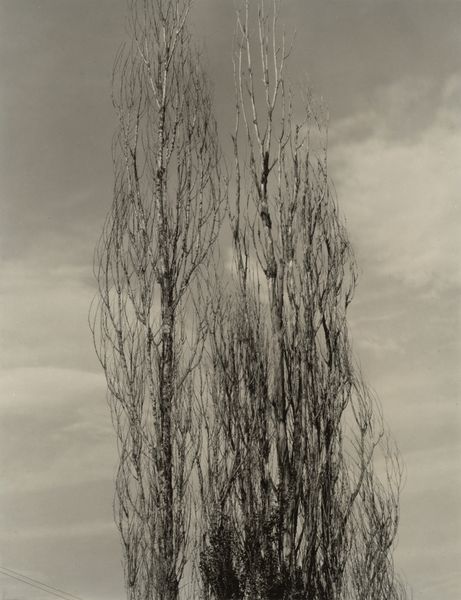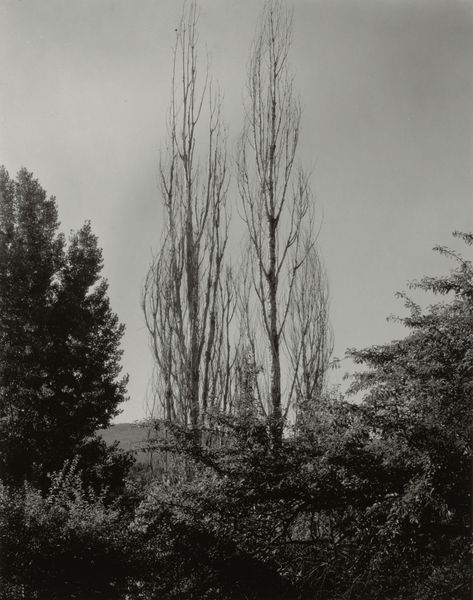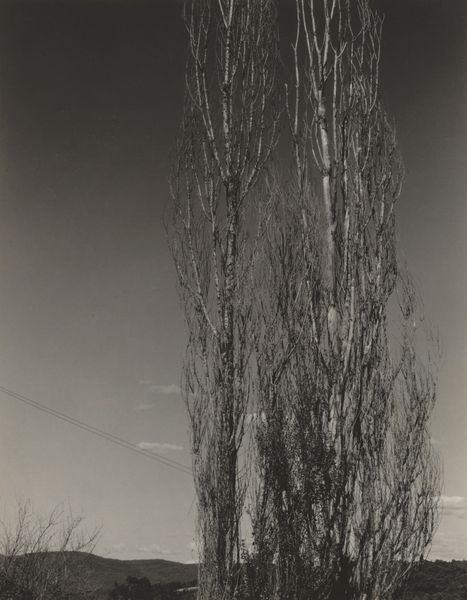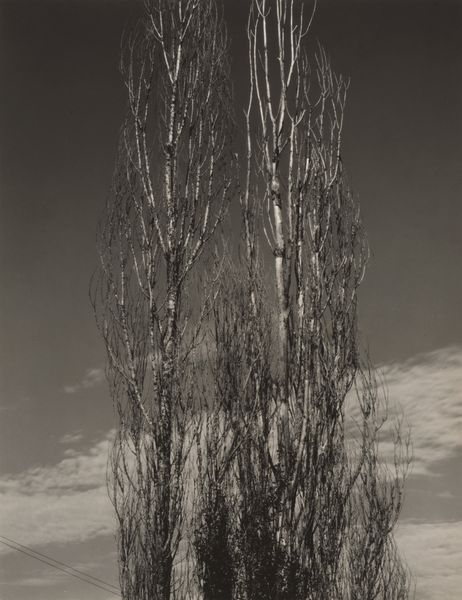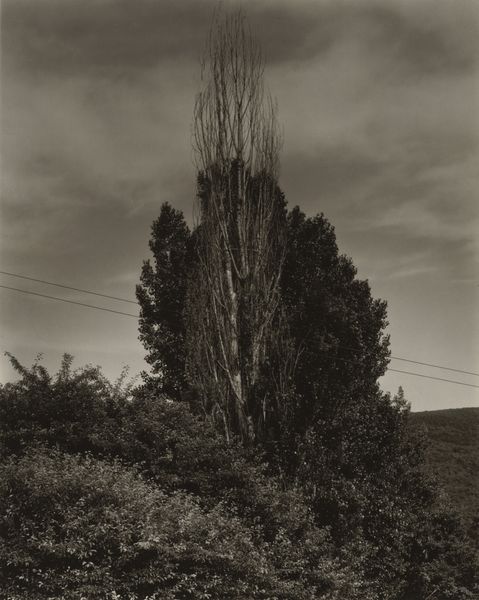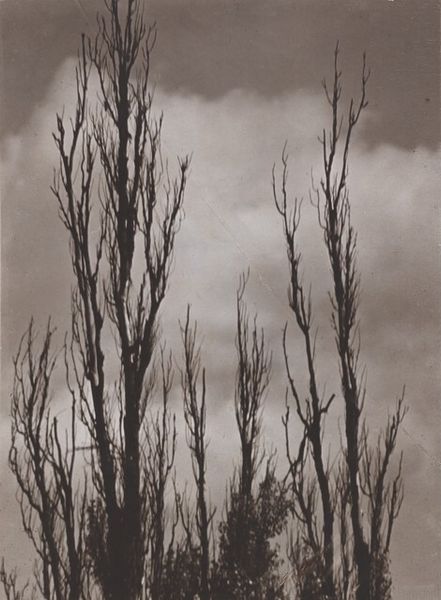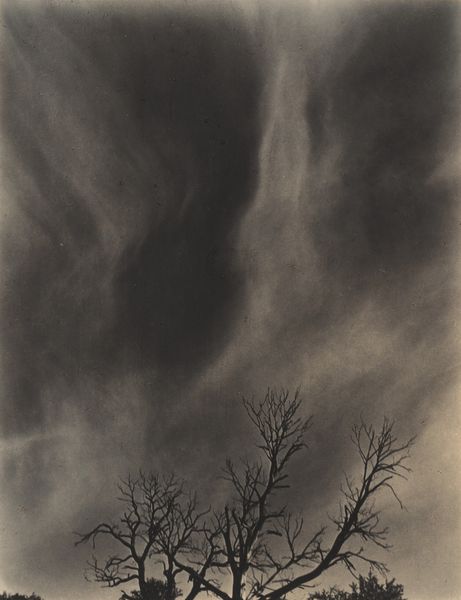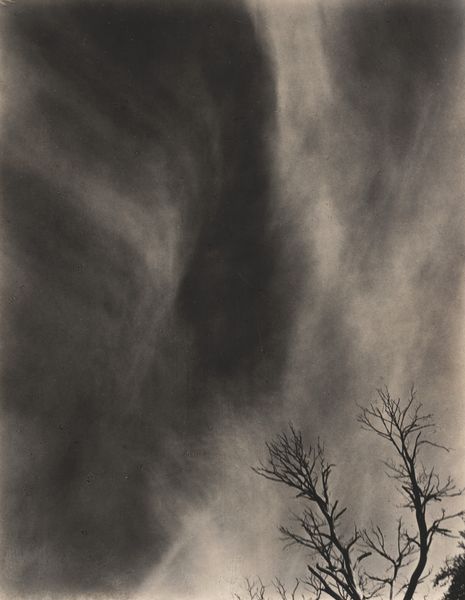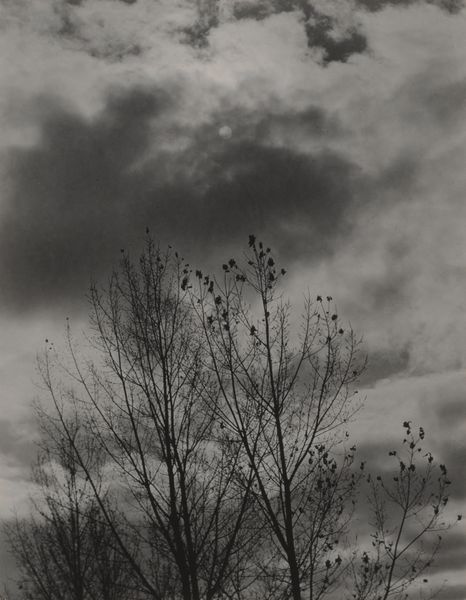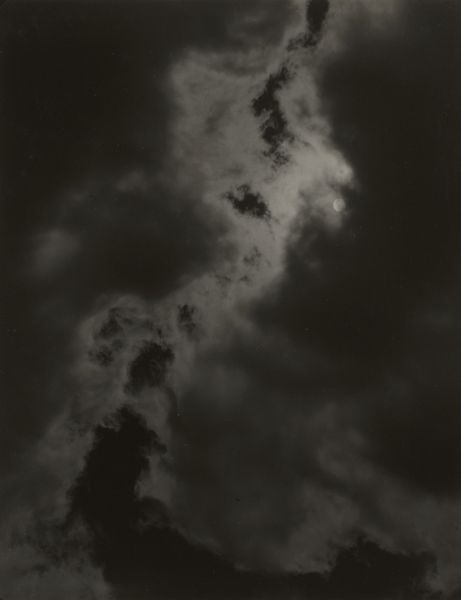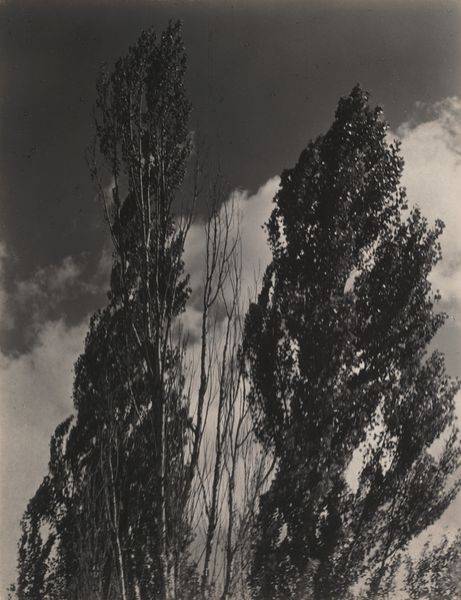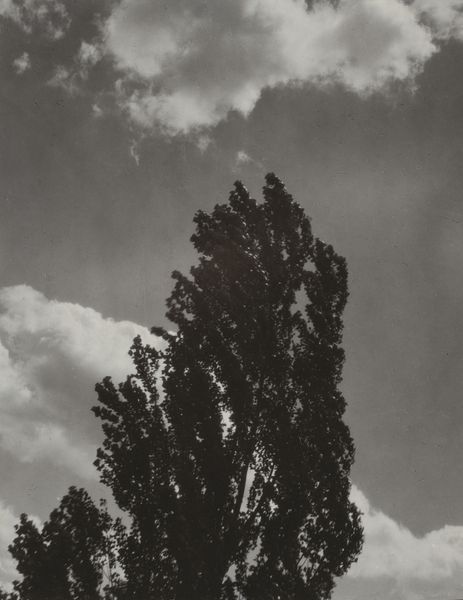
photography, gelatin-silver-print
#
black and white photography
#
landscape
#
photography
#
gelatin-silver-print
#
monochrome photography
#
abstraction
#
monochrome
#
modernism
Dimensions: sheet (trimmed to image): 24.1 × 19 cm (9 1/2 × 7 1/2 in.) mount: 53 × 39.3 cm (20 7/8 × 15 1/2 in.)
Copyright: National Gallery of Art: CC0 1.0
Editor: This is "Poplars—Lake George," a gelatin-silver print by Alfred Stieglitz, created in 1933. It’s such a stark image. The skeletal trees against the clouded sky give it a real sense of melancholy. What stands out to you in this piece? Curator: Initially, the contrast arrests the gaze; the opposition of tones dictates an attention to the composition. Note the textural differences Stieglitz achieves between the stark, almost brittle, branches and the soft, voluminous clouds. Consider how the negative space interacts with the positive forms, creating a balanced yet dynamic visual field. Editor: So you’re focusing more on the relationship between the different elements? Curator: Precisely. How the artist manipulates light and shadow is critical. This play, orchestrated meticulously through dark and light, structures how we apprehend the image’s form. Are these formal choices contributing to a particular meaning or effect? Is there anything beyond a depiction of Poplars in monochrome? Editor: I hadn’t thought about it that way, I was just looking at it literally as an image of trees, I suppose, and my feeling about how barren the trees are. Curator: True, we must examine what is present within the frame, without resorting to narrative impulses from an external source. Consider how our subjective perception may obscure objective scrutiny. Does feeling alter our interpretation, or does understanding enhance feeling? Editor: I think I'm beginning to understand more now that thinking purely about structure, the monochrome palatte is very stark which reinforces the feeling of it being empty, despite being rich in contrasting tones. I never considered that! Curator: Precisely, understanding the interplay of forms enhances the affective resonance of the work. Thank you for lending me your view, it allows another reading of the work that has become more concrete through our brief engagement.
Comments
No comments
Be the first to comment and join the conversation on the ultimate creative platform.
